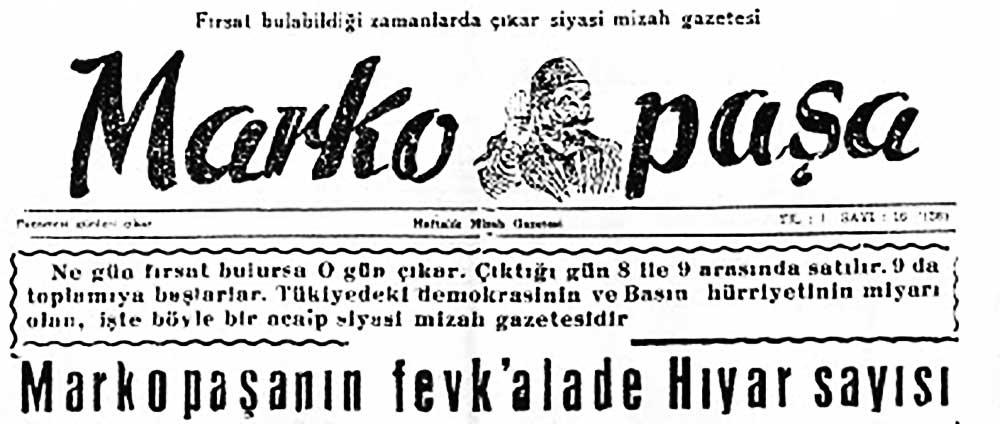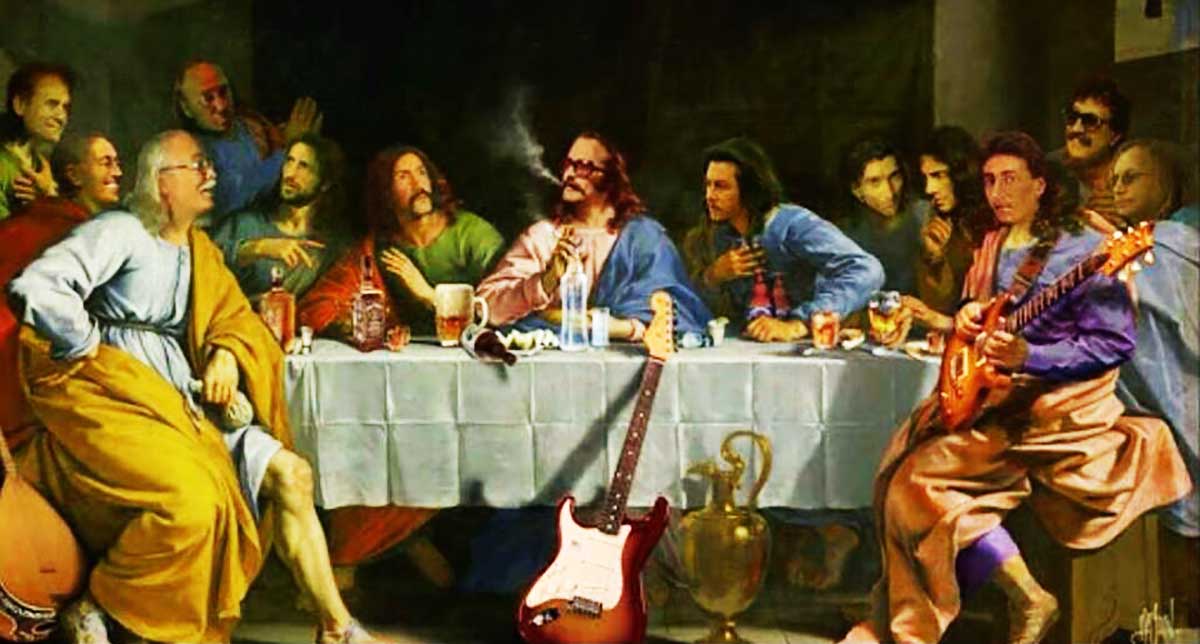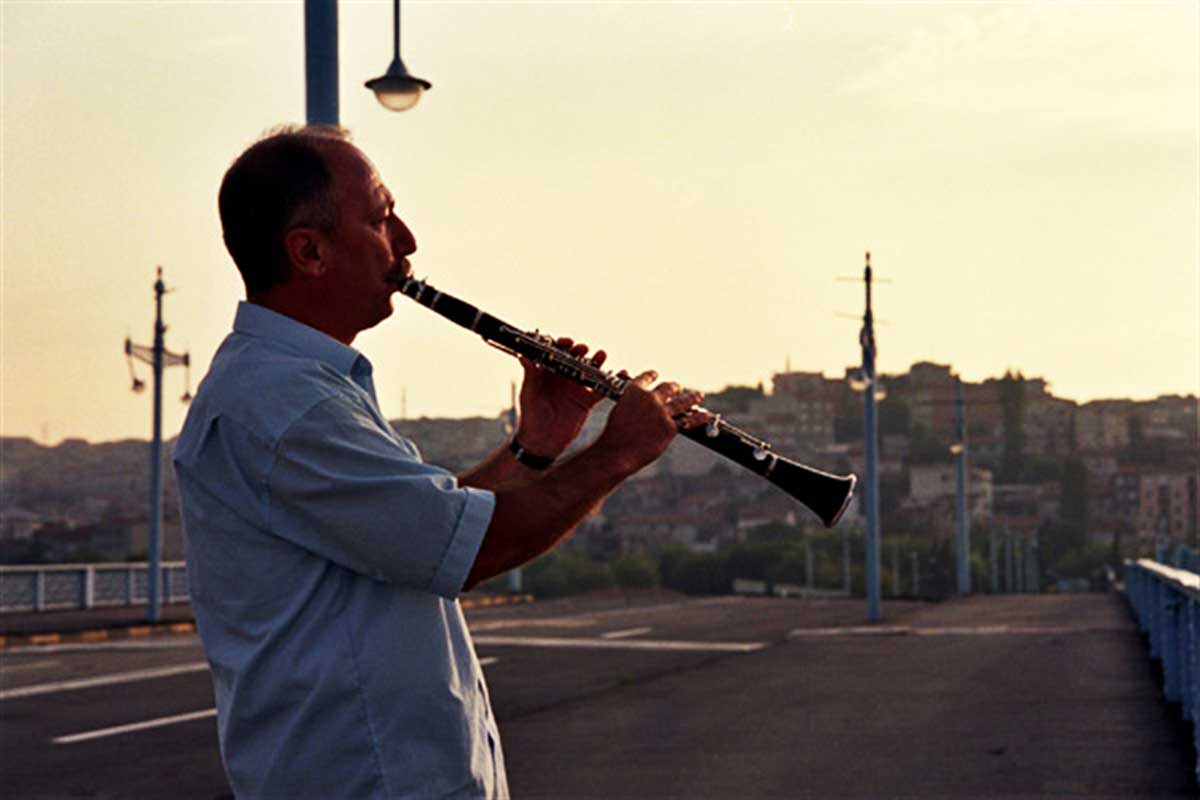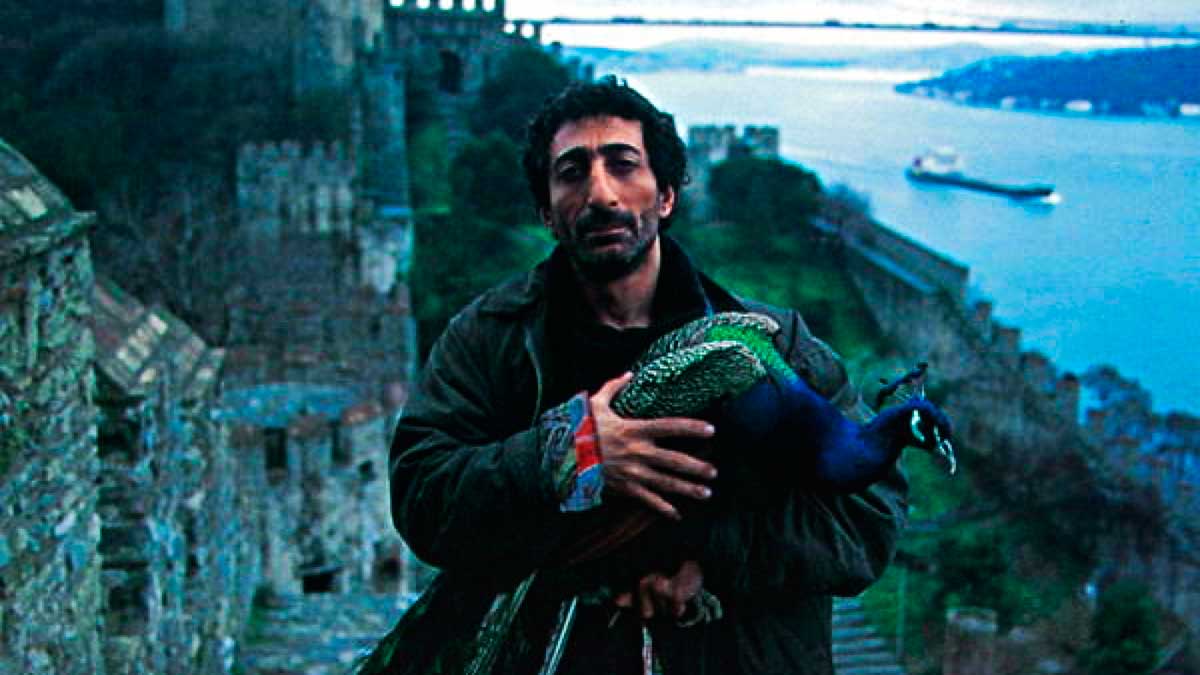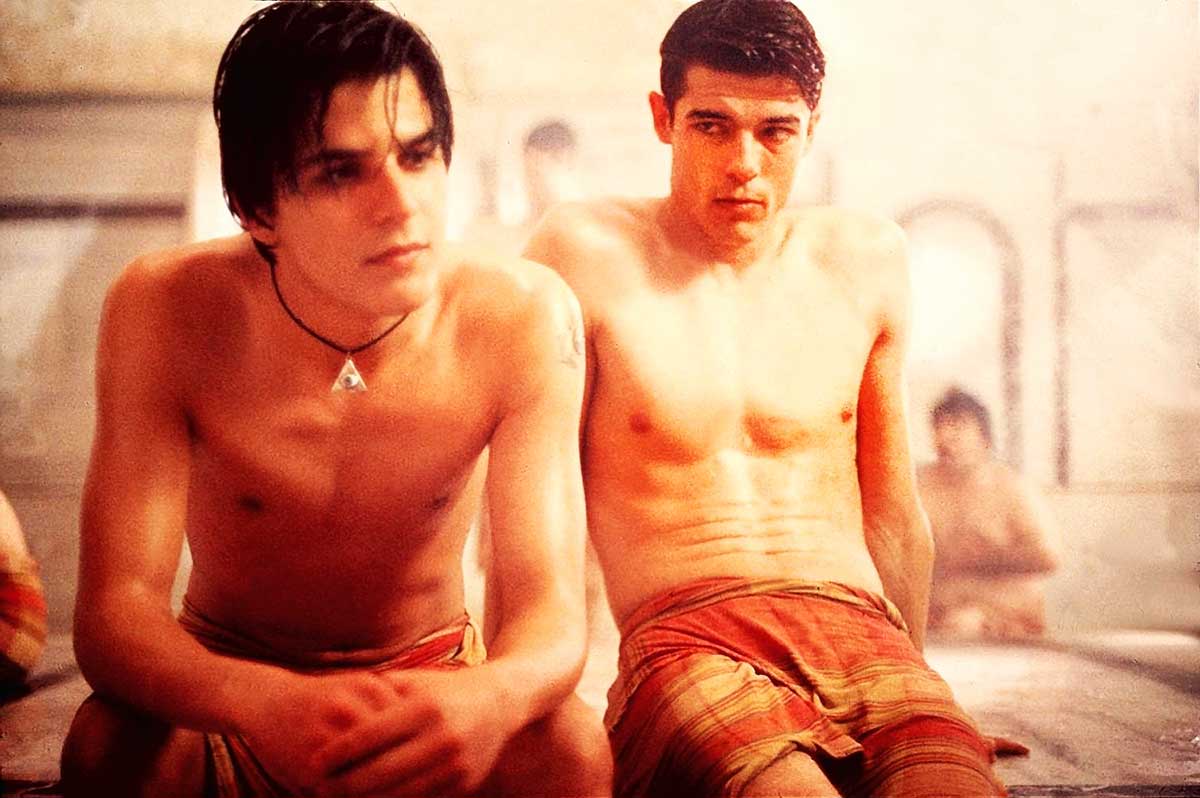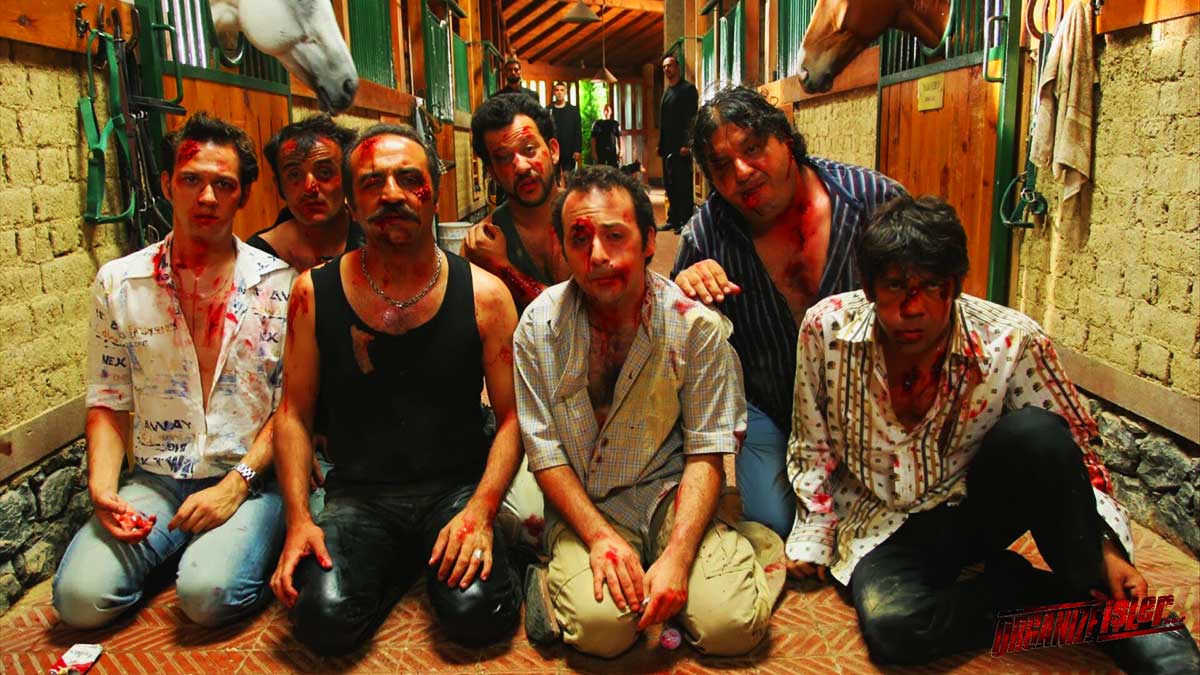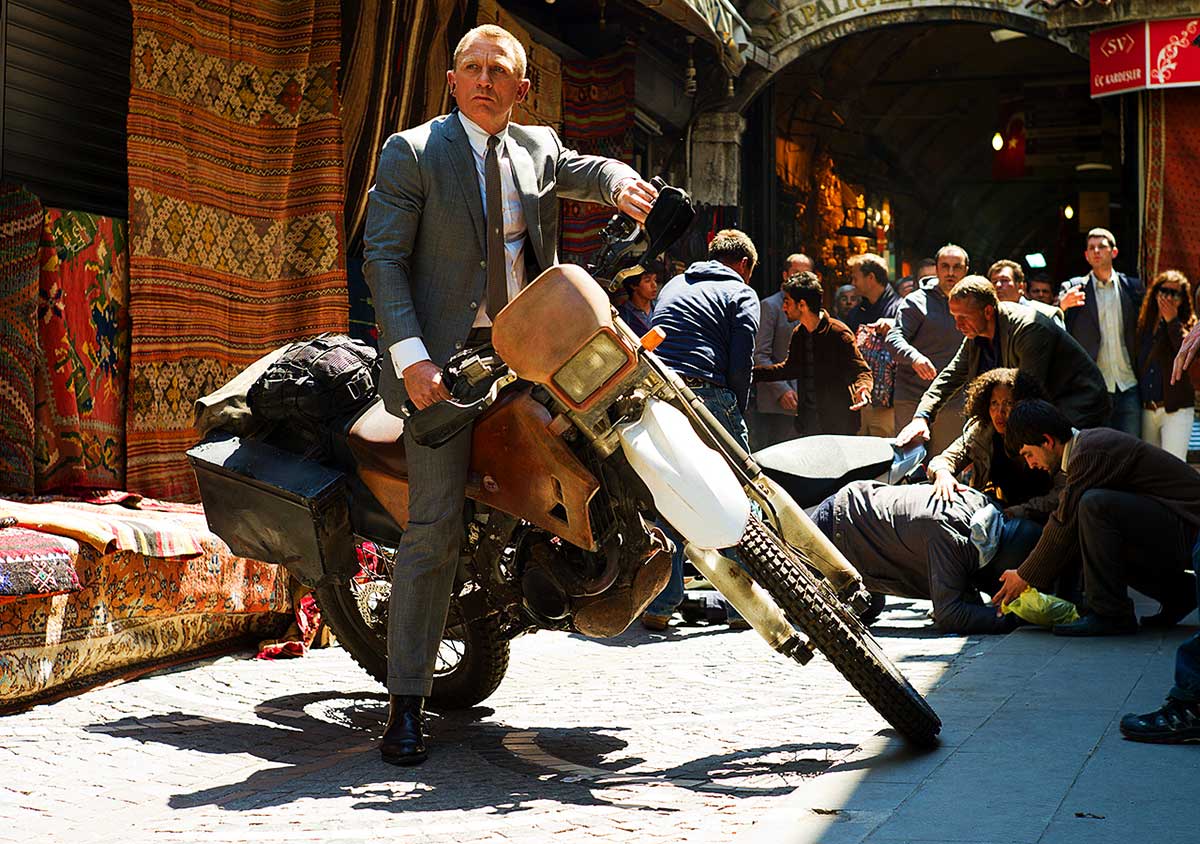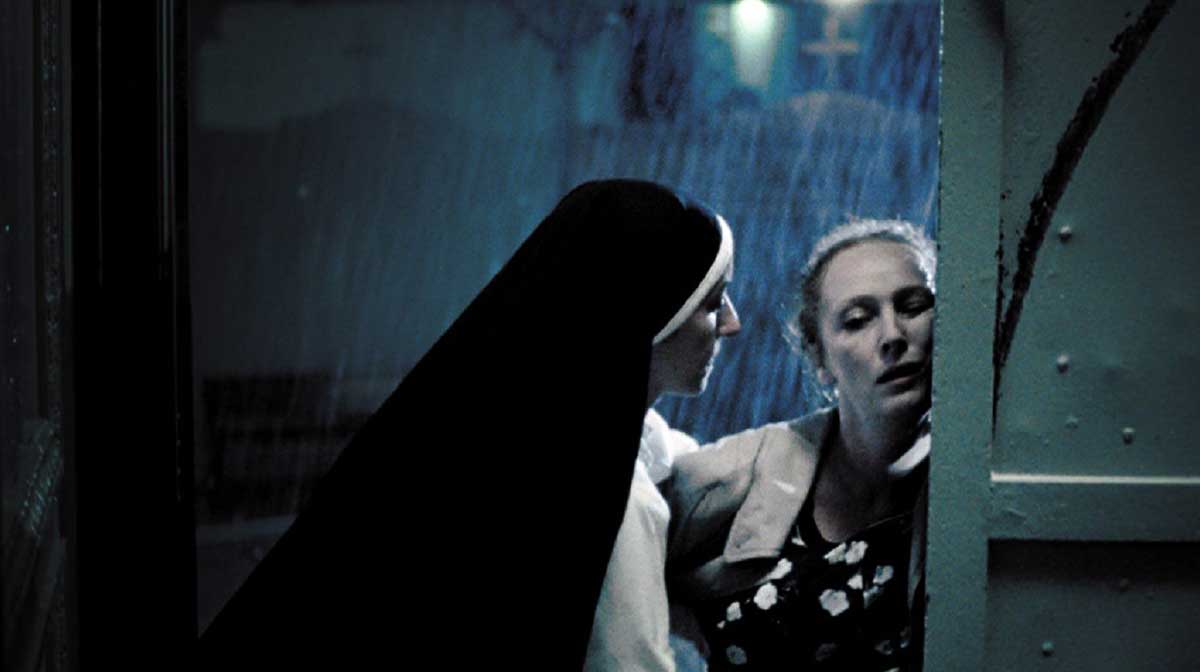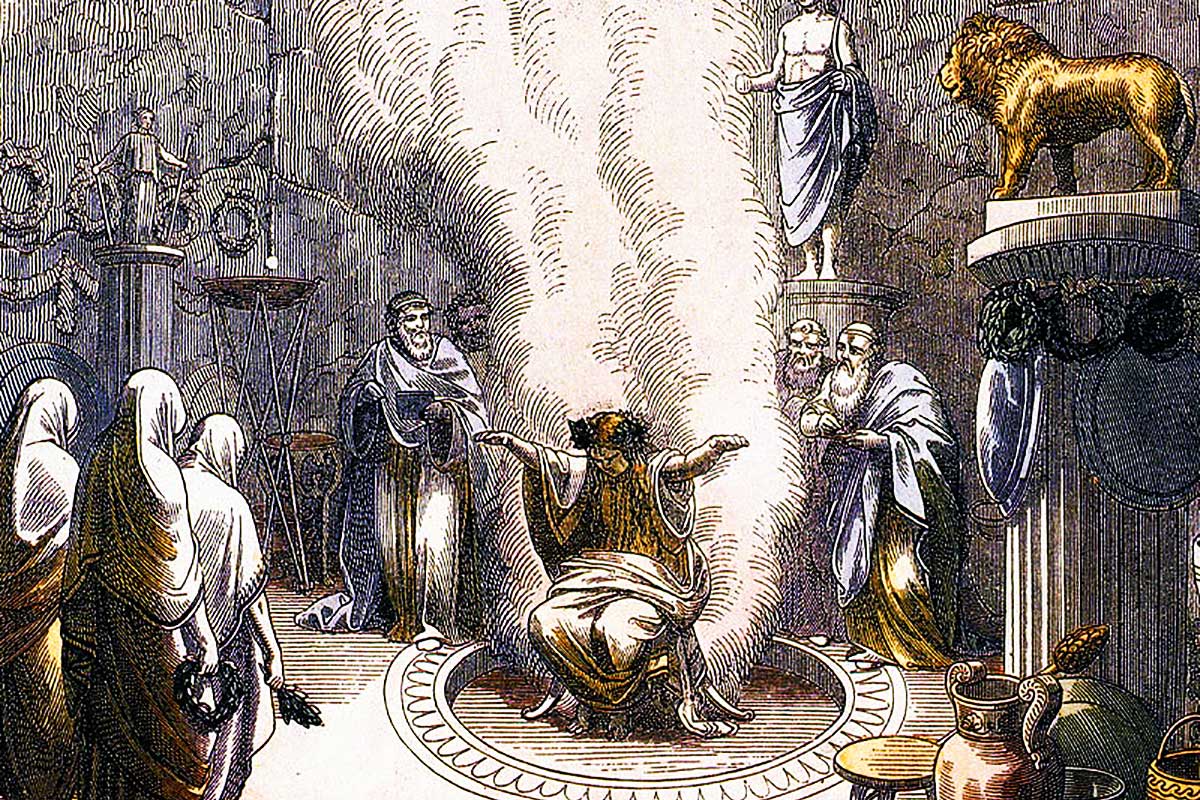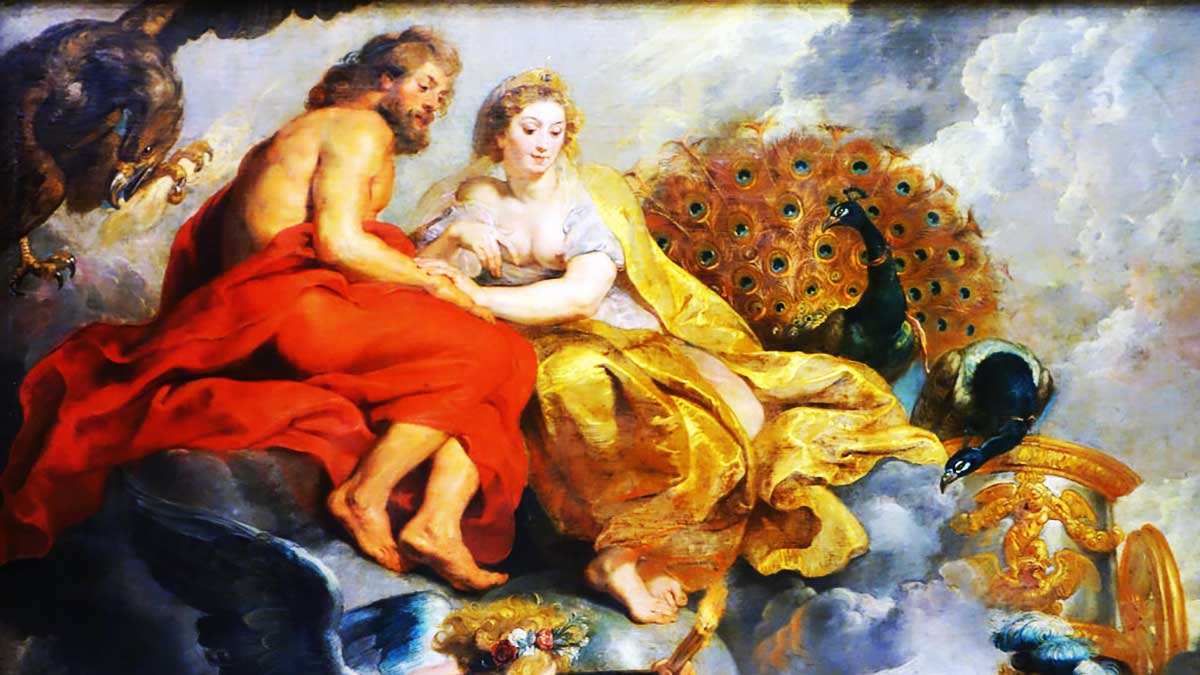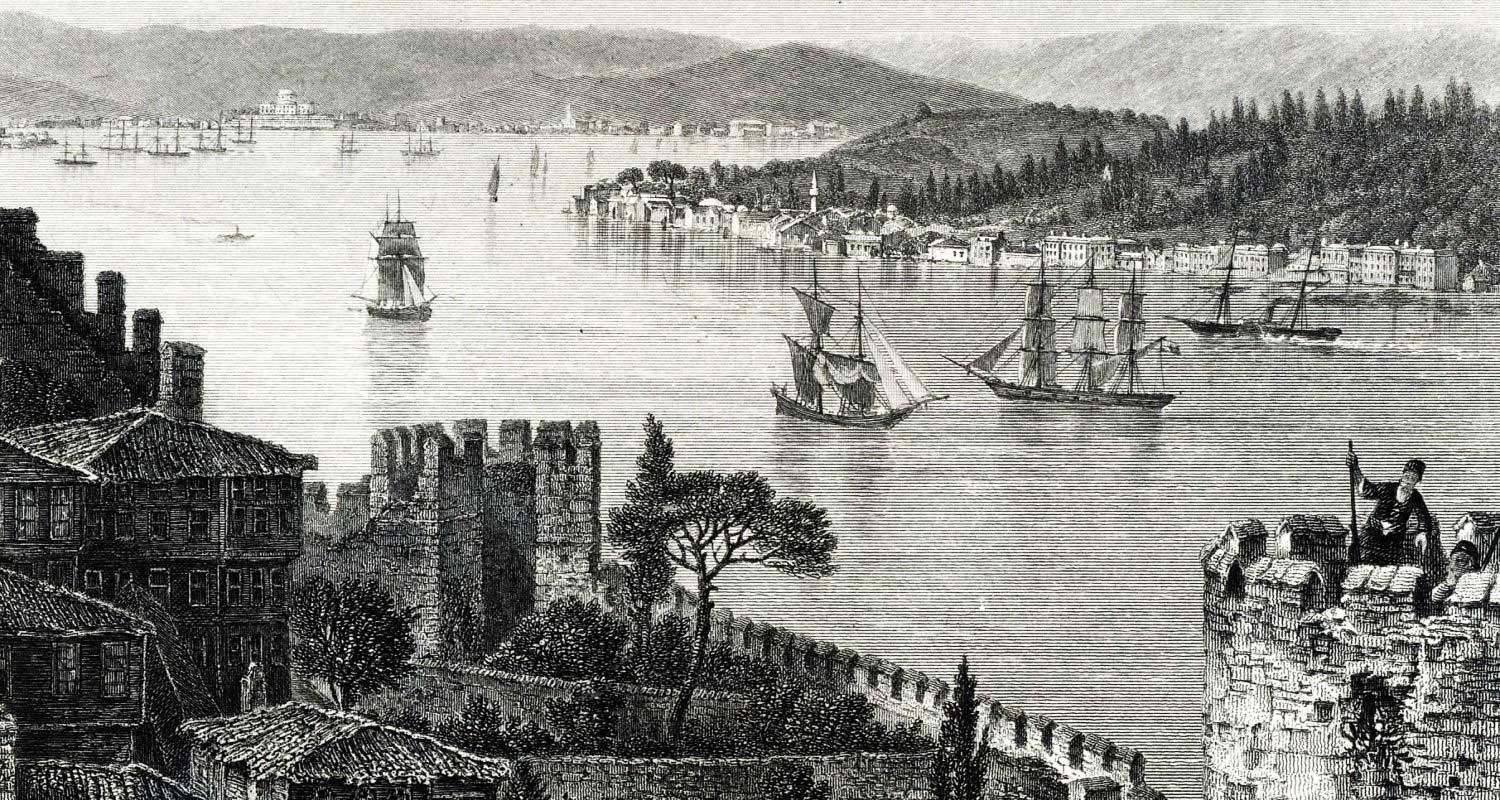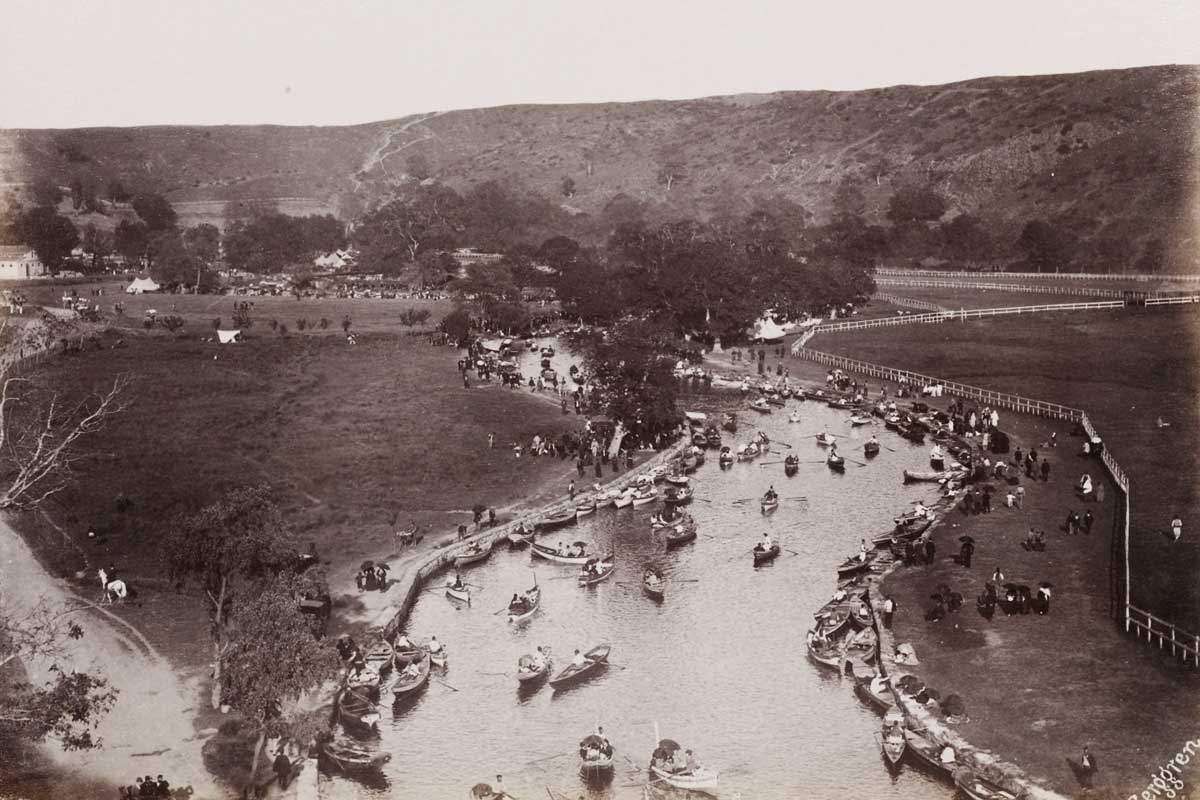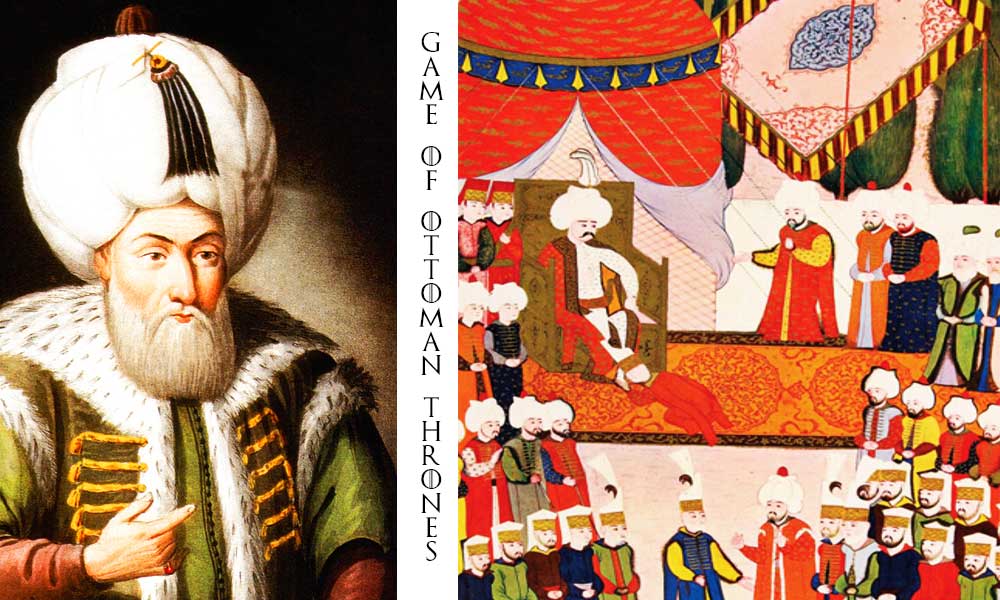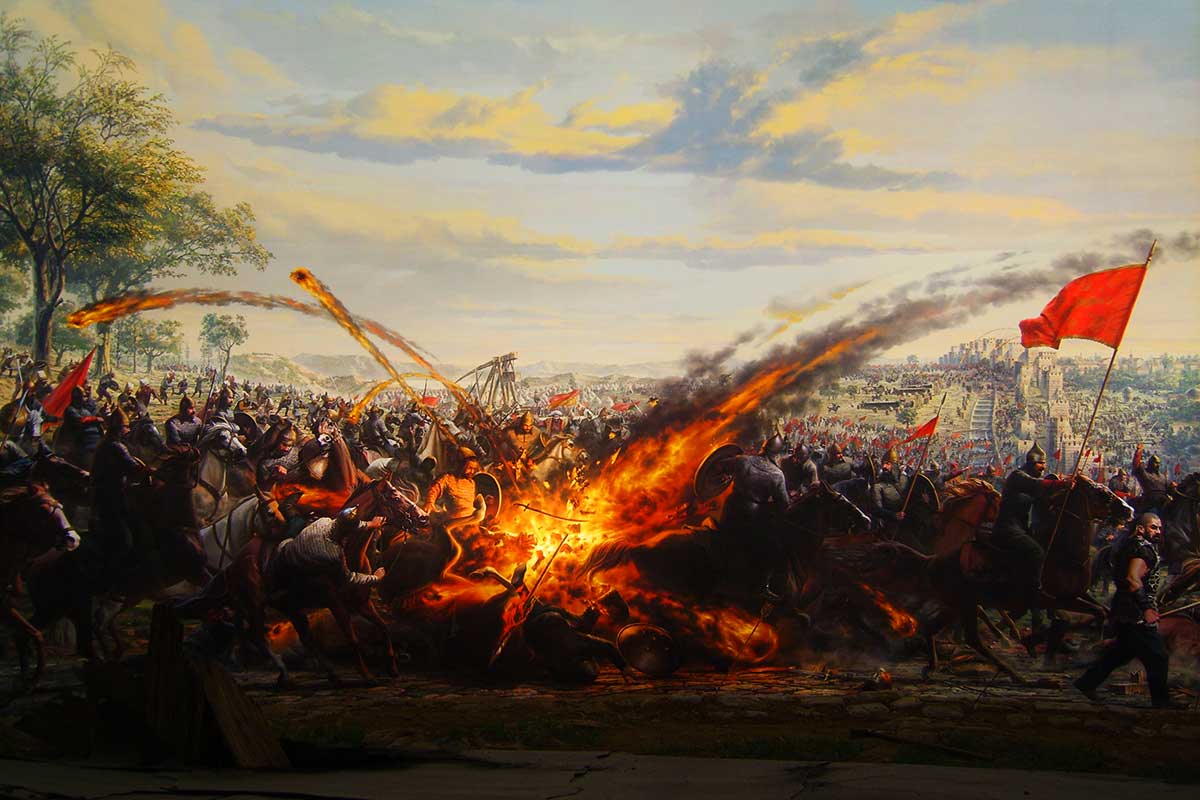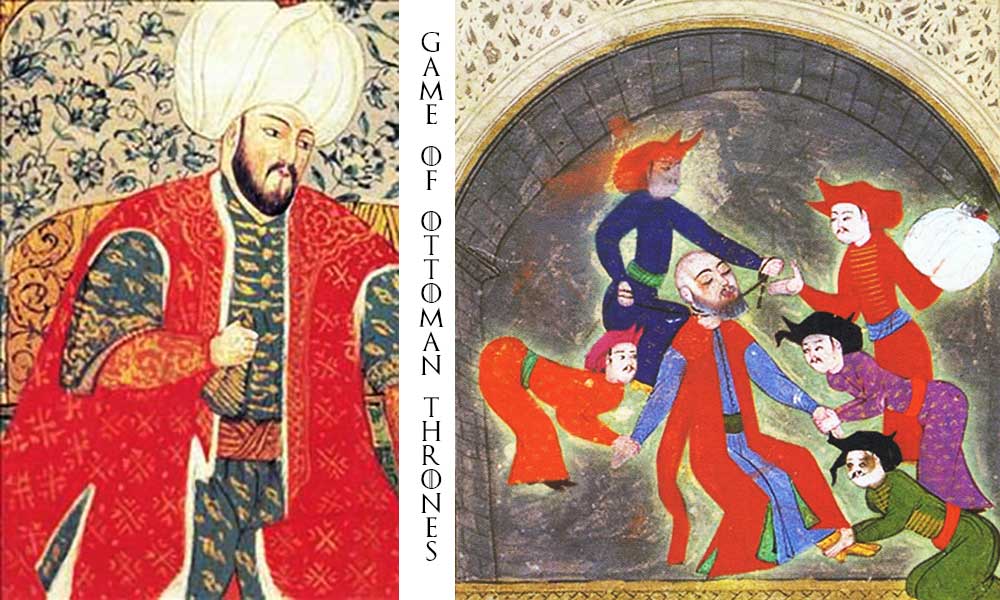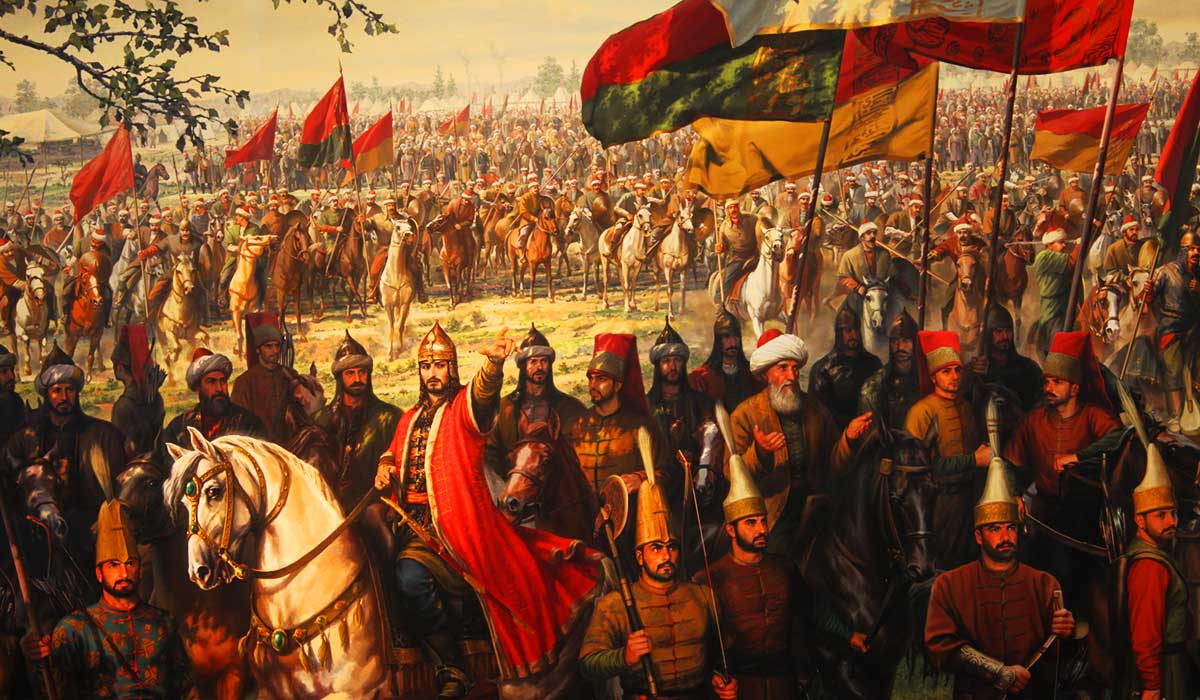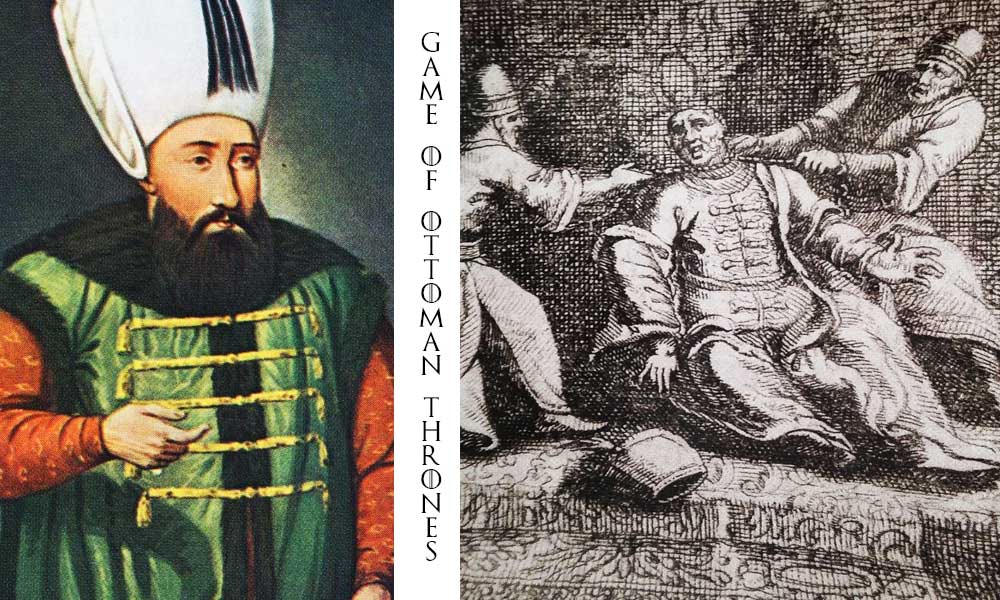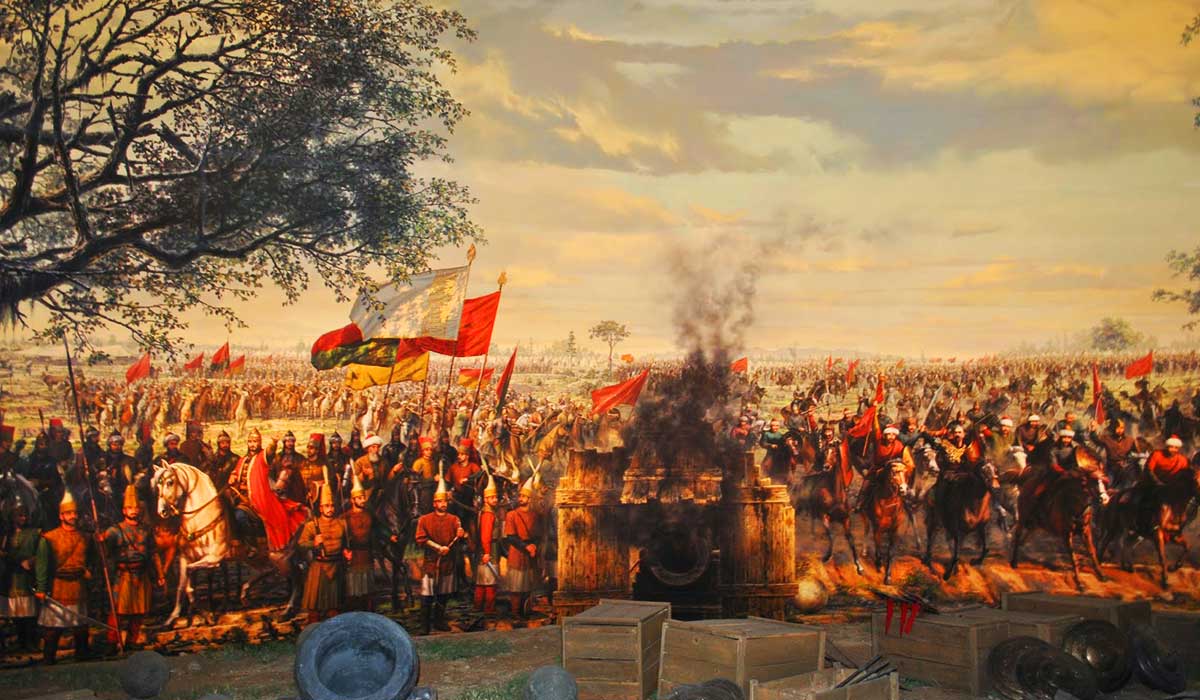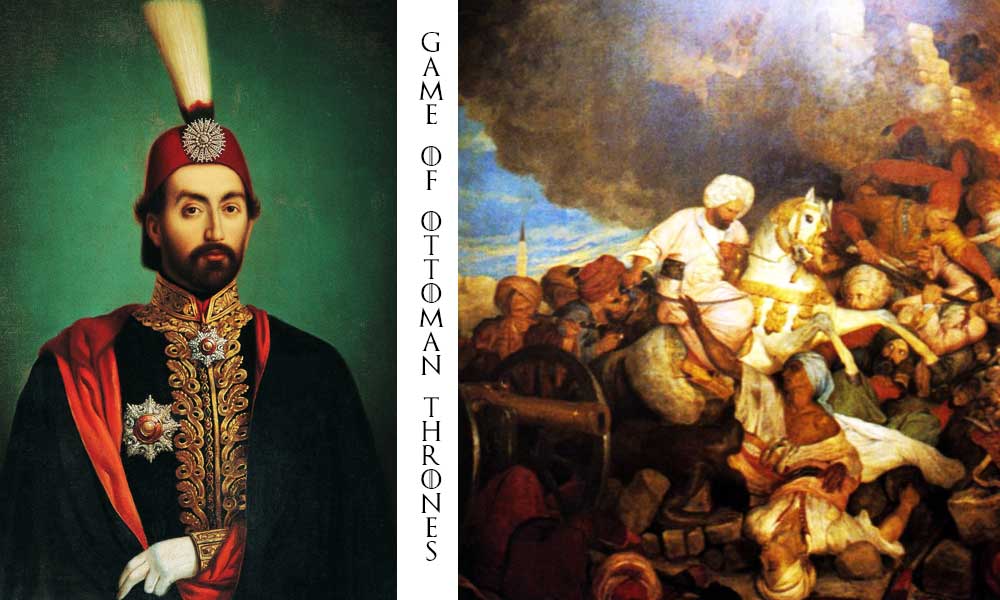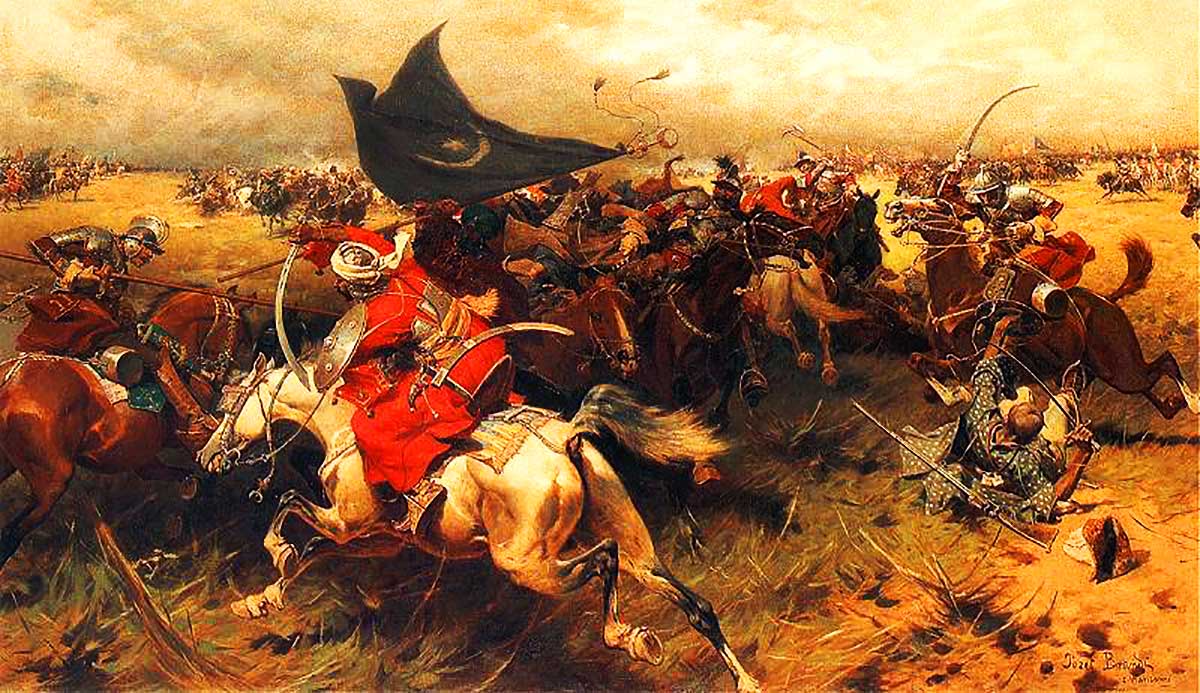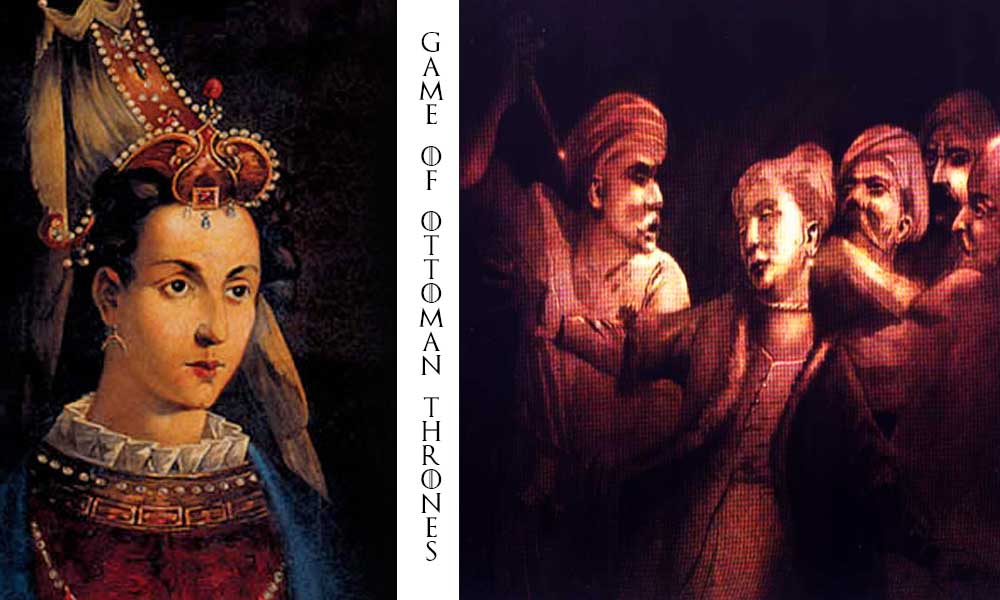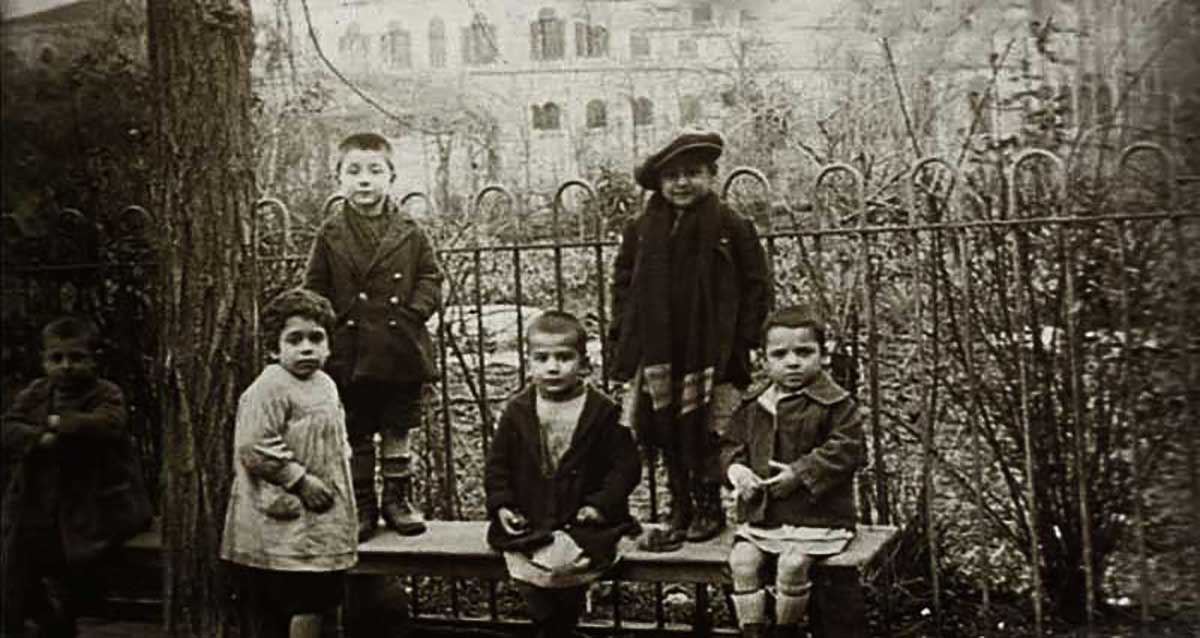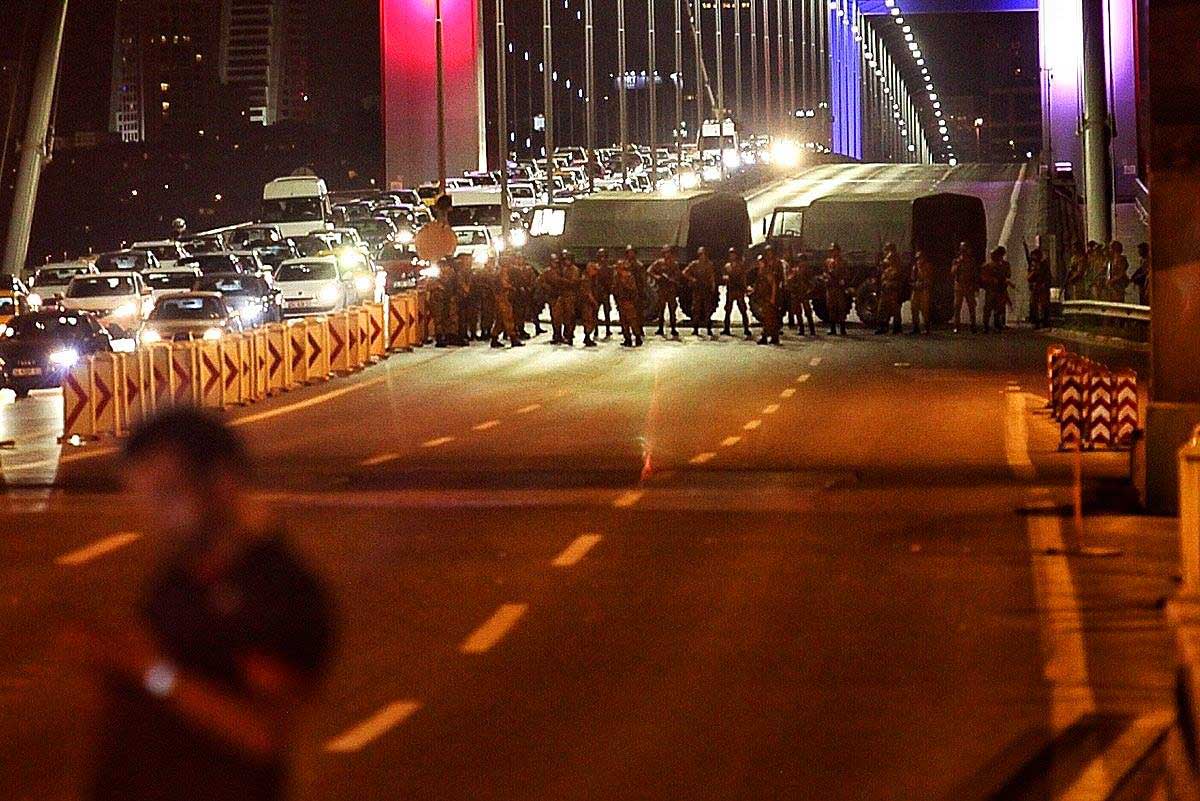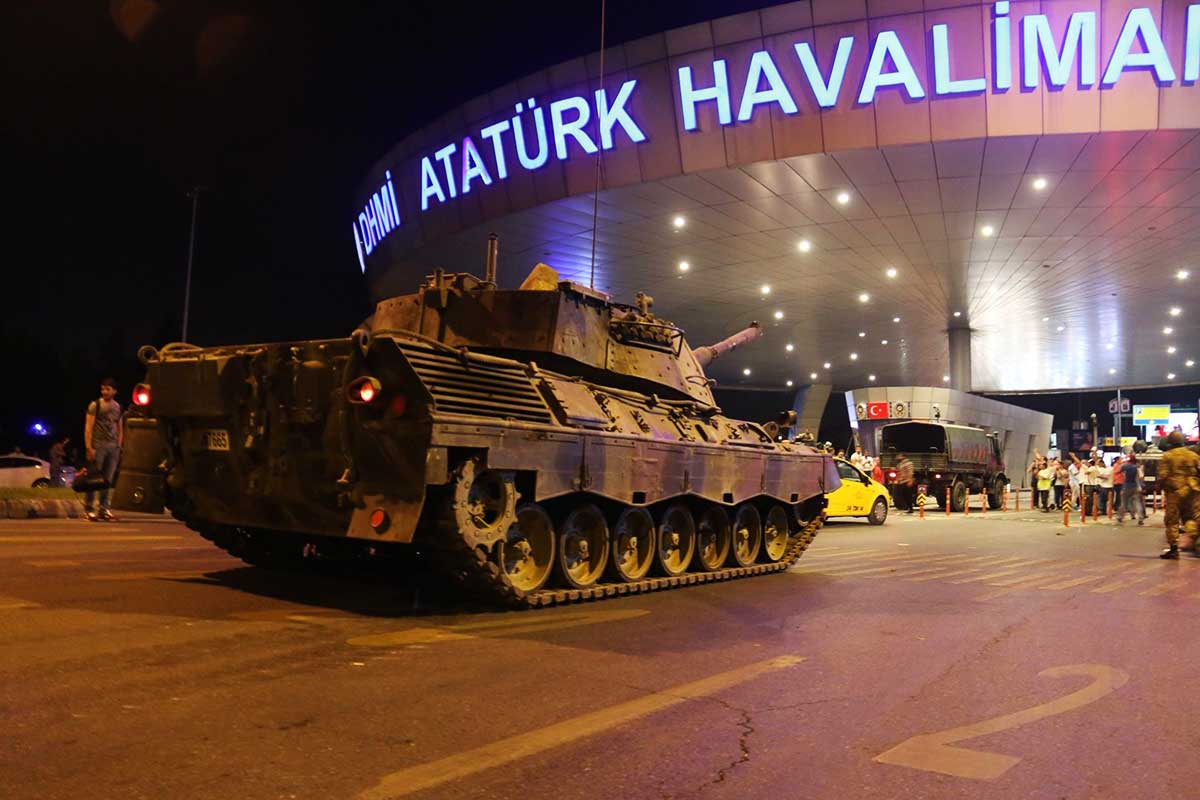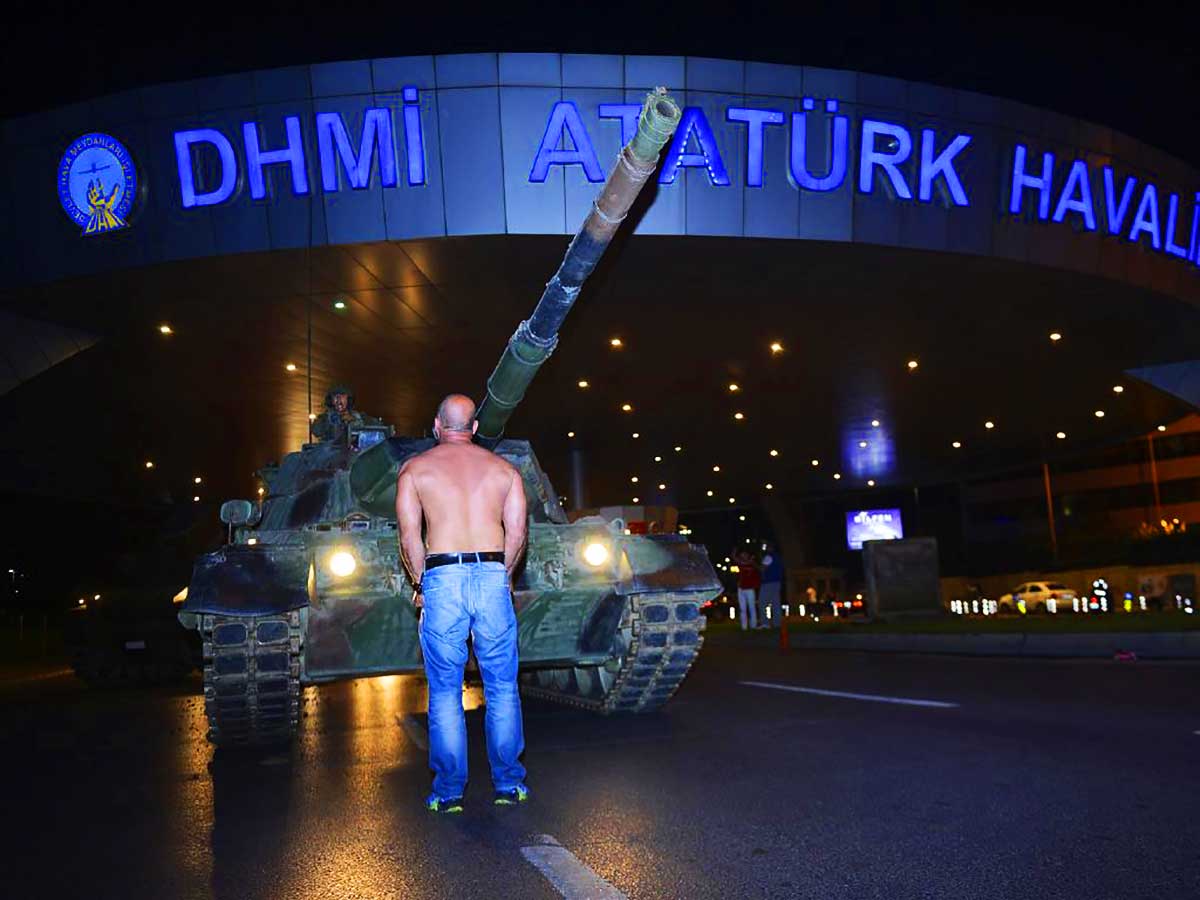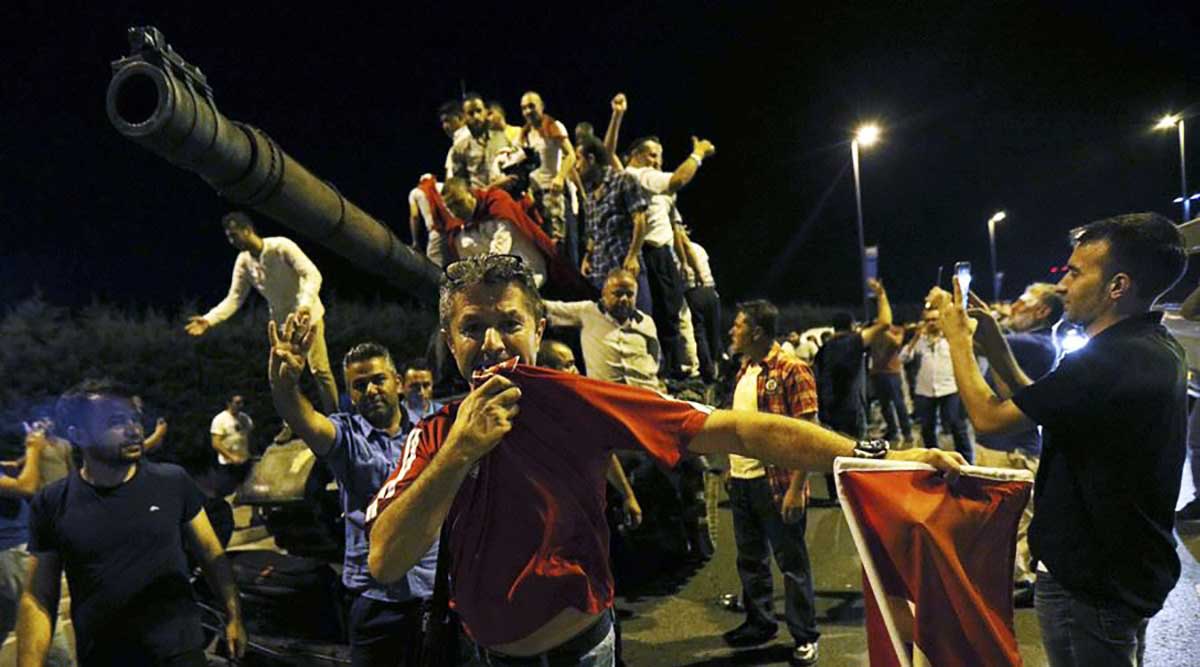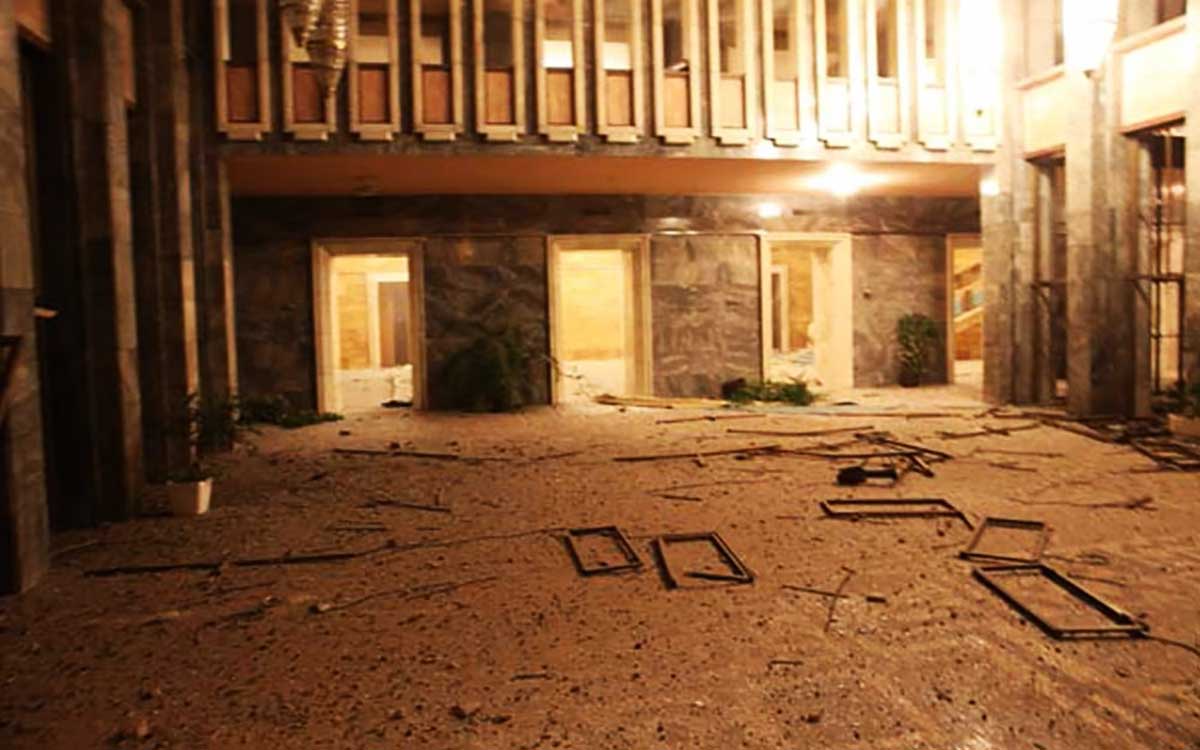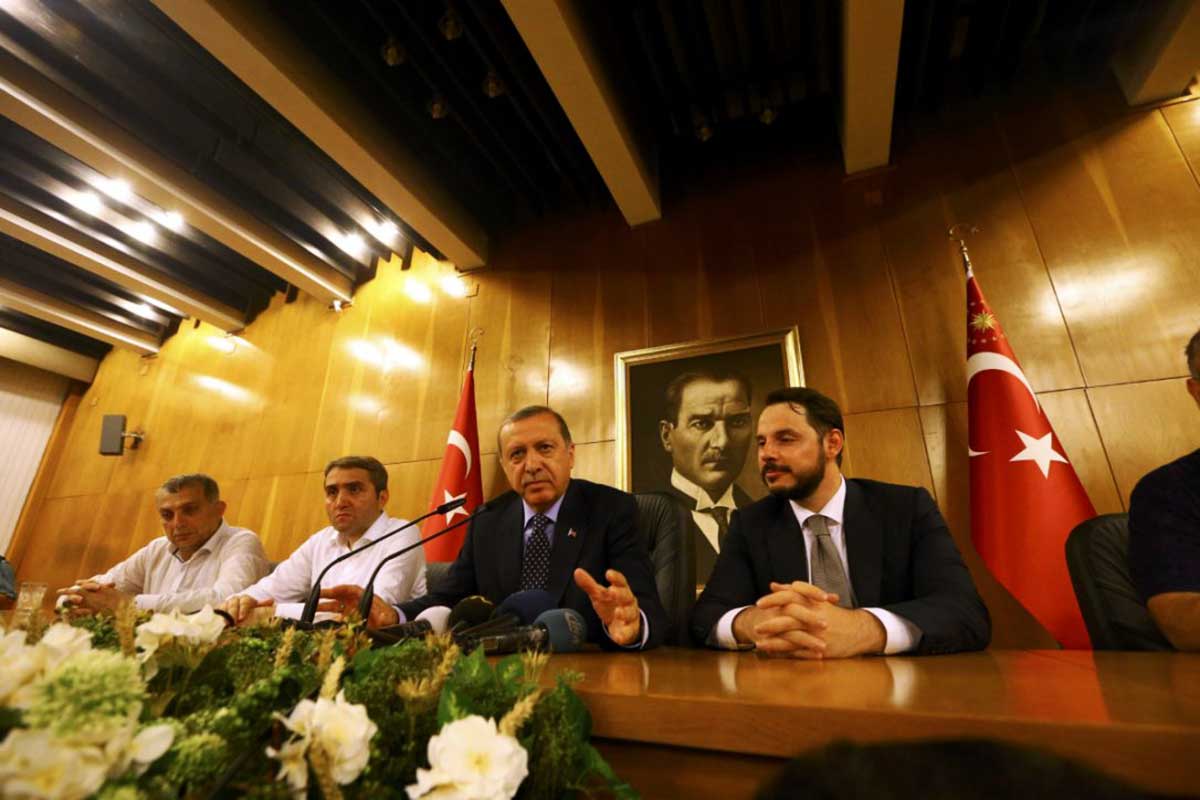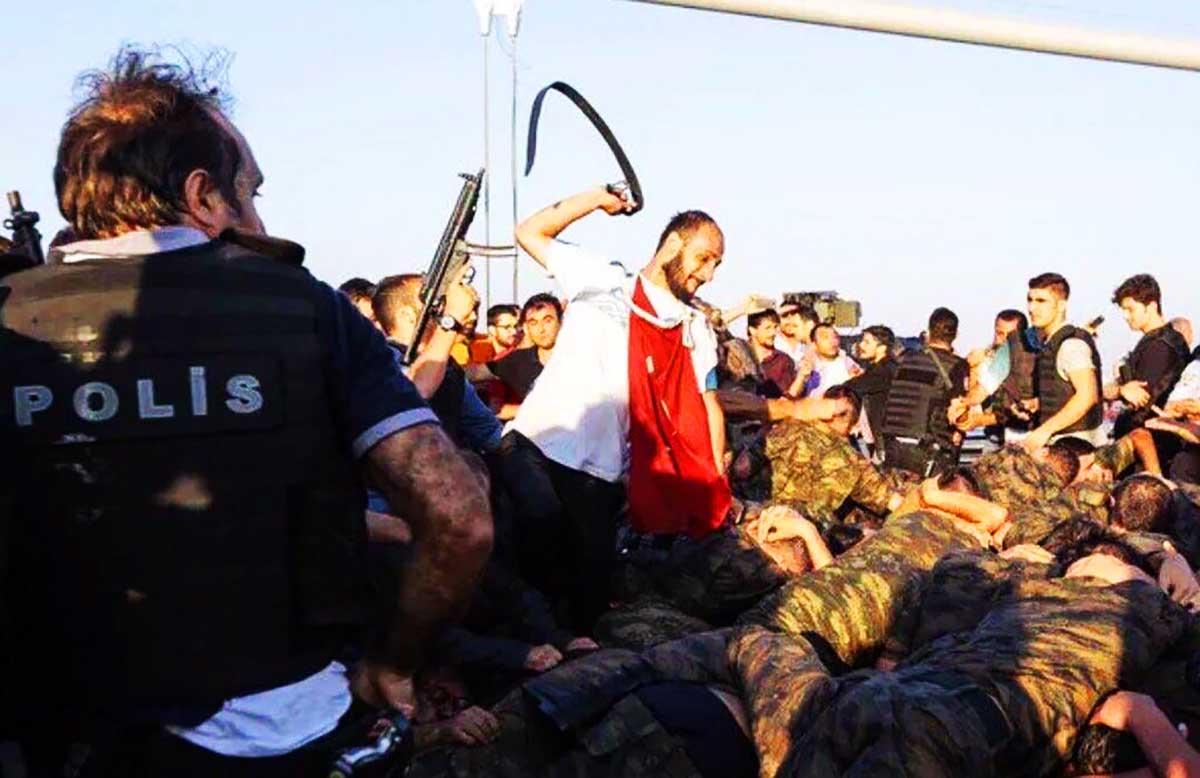Istanbul: One word, 8 letters, one city, two continents. A plethora of movies set in this magical place, showing both fascinating and less pleasant faces of Istanbul all over the world. Audiences from Japan to France and Mexico to South Africa gaze at the breathtaking images of the city through the silver screen.
CROSSING THE BRIDGE: THE SOUND OF ISTANBUL (İSTANBUL HATIRASI: KÖPRÜYÜ GEÇMEK)
FATİH AKIN
2005
Thanks to its location between Orient and Occident, being the centre of glorious empires such as Byzantine and Ottoman, Istanbul has a very deep and rich musical heritage. German musician Alexander Hacke and German-Turkish director Fatih Akın teamed up to bring this rich musical culture to the silver scene and their collaboration resulted in the best music documentary ever made about Istanbul. Rock ‘n’ roll, punk, folk, pop, rap, traditional Turkish, Kurdish and Roma music are all interpreted by Istanbul-based musicians such as Ceza, Orhan Gencebay, Sezen Aksu, Müzeyyen Senar, Duman and Baba Zula. The movie is usually advised to those who are lovers of the music and culture of Turkey, but it is also a visual documentary of Istanbul which shows the city’s old and new, western and eastern, poor and rich, modern and traditional. Despite the criticism that the movie seriously lacks contemporary urban Turkish musicians and misleads the audience about the cultural spreading of Istanbul, “Crossing the Bridge” is always a good start to explore Turkey’s musical culture.
WORLD IS NOT ENOUGH (DÜNYA YETMEZ)
MICHAEL APTED
1999
This is the 19th instalment in the official Bond series, Pierce Brosnan’s third turn as James Bond, and his best one yet – it is a role that no one could ever forget. He is accompanied by Sophie Marceau’s superb acting who portrays Elektra King. Mrs. King’s father is an oil tycoon who is assassinated in an explosion by international terrorist Renard. The British spy James Bond is keen to protect Elektra King from Renard and thus shuttles back and forth between exotic filming locations such as Spain, England, Afghanistan, Azerbaijan, Kazakhstan and Turkey. Of course, Istanbul has a prominent role in the movie. The film includes picturesque scenes in Istanbul with the Bosphorus being the perfect background scenery as well as the famous Maiden’s Tower which functions as Renard’s Turkish lair and the marvellous Küçüksu Pavilion as Electra King’s villa in Baku. The opening scene on the Thames, the scenes and shots in the glorious city of Istanbul, a great plot, one of the best James Bond ever, indeed, the film remains as a masterpiece among all the Bond movies.
THE BANDIT (EŞKIYA)
YAVUZ TURGUL
1996
“A star falls from the sky when a bandit dies, according to an old south-east Anatolian legend…” This legend comes true in this 1996 Turkish film which was written and directed by Yavuz Turgul and starring Şener Şen and Uğur Yücel. This is one of the best movies set in Istanbul, and it is not only because the film is as epic as it is acclaimed, but from its cinematography to the storytelling, from powerful acting to the plot, “the Bandit” is considered as one of the best films to ever have come out of Turkey. Set in central neighbourhoods such as Cihangir, Taksim and Tarlabaşı, the movie tells a story of Baran, an old-style Anatolian bandit, following his release from prison after having served 35 years. He returns to his village only to find it destroyed by a dam. Soon afterwards, he starts a journey to Istanbul in pursuit of taking revenge on his former best friend, Mahmud (Berfo), who ratted on him and escaped to Istanbul with his gold and his woman, Keje. A classic, a real masterpiece, one of the best pictures of Turkish cinema, a must-see movie!
DISTANT (UZAK)
NURİ BİLGE CEYLAN
2004
This glorious film directed by Nuri Bilge Ceylan is the winner of 25 awards including Best Actor at Cannes, Special Jury Prize at Chiago, and Best Balkan Movie at Sophia International Film Festival. Still, this film is not for everybody’s taste. Frankly speaking, watching this movie is a feast only if you love art-house films. Otherwise, it is usually torture and torment as the movie is super realistic, the pace is really slow, and it is pretty long with a simple story. The film follows to two strong characters in Istanbul, one is Mahmut, a middle-aged wealthy and intellectual photographer, and the other one is Mahmut’s cousin, Yusuf, an illiterate and unskilled man, who comes to Istanbul to find a new life after he loses his job in his village. They start to live together in Istanbul and that marks the beginning of a beautiful melancholy. Darkness, pessimism and loneliness exist in the city of millions, this artistic piece of work – “Distant” – is an observation of frustrating lives of the two characters living in snowy Istanbul.
ISTANBUL UNDER MY WINGS (İSTANBUL KANATLARIMIN ALTINDA)
MUSTAFA ALTIOKLAR
1996
Everybody is familiar with the legendary story of Hezarfen Ahmed Celebi who flew with homemade wings across the Bosphorus from the top of the Galata Tower and landed in the Doğancılar area in Üsküdar as narrated by Evliya Celebi, the 17th century Ottoman traveller. Indeed, Hezarfen Ahmed Celebi had a brother named Logari Hasan Celebi who tied seven rockets onto his back and launched himself into the night sky off, and then falls to the sea nearby Sarayburnu. Their story was adapted to the golden silver by director Mustafa Altıoklar who transports us to 17th century Istanbul, the powerful times of the Ottoman Empire under the rule of Sultan Murad IV, and it is the Renaissance age in Europe where intrigues, love and war alternate with each other in order to make our characters fly across Bosporus and escape from death. In more simple words, the best age ever to be in Istanbul, and it is easy to go, just watch “Istanbul under My Wings”.
ISTANBUL TALES (ANLAT İSTANBUL)
ÜMİT ÖNAL
2005
“Wake up! Everyone, wake up! The fairy-tale’s over! Aren’t you awake yet? I know how to wake you up. Once upon a time, once upon a morning in Istanbul…There was us and there wasn’t. And that’s as far as the fairy tale goes…” says the Turkish Pied Piper while he is walking with his flute on the famous Galata Bridge. Indeed, a Turkish Pier Piper! “Istanbul Tales” modernises five classic fairy-tales that everybody knows; Snow White, Cinderella, Pied Piper, Sleeping Beauty and Little Red Riding Hood. Each of these fairy-tales is interconnected. Lives intersect and influence one another. Don’t expect a Tarantino from Ümit Ünal because that would be very unfair, but this movie is definitely a nice try! The film also allows viewers to meet the city of Istanbul, a city that spans two continents; a metropolis situated at the easternmost point of the West and westernmost point of the East. And it is here that the best-known fairy-tales of the West are enacted once again. Istanbul Tales tells us that there is no such thing as an East-West divide, but that true fairy-tales are the same the world over.
A TOUCH OF SPICE (BAHARATIN TADI)
TASSOS BOULMETIS
2003
There is no other Greek movie that has worshipped this magical city more than Tasos Boulmetis’ Touch of Spice which tells a story of a boy and his family who are forced to leave their lives and their beloved city and settle in Athens. After all, the leading player, Fanis, becomes an astrophysics professor in Athens, but whatever he does, he can’t forget his beloved grandfather in Istanbul who repeatedly promises to visit Athens but never actually does. At the end, Fanis burns the bridges and leaves Athens for Istanbul in expectation to see his grandfather and his first love. Then, the movie introduces us to smells, pictures and feeling that we have never imagined before. A movie that awakens all of our senses and makes us wonder around tastes of Istanbul through the years. “A Touch of Spice” is semi-auto biographical tale of the Greek writer and director Tassos Boulmetis and a must-see film especially for those who are looking for colourful family moments, culinary and Istanbul in a film.
SOMERSAULT in a COFFIN (TABUTTA RÖVAŞATA)
DERVİŞ ZAİM
1996
Despite little expectations, Turkish Cypriot director Derviş Zaim made a movie that is regarded as one of the best films from Turkey and won awards at various film festivals of several countries such as Turkey, Canada, United States, England, Germany and Italy. The film has very original story that tells us about a homeless criminal and car thief who owns nothing in his life. He has no home and work, often nothing to eat, but he has few friends. His only worry is where to sleep and his solution to the problem is unique; he steals cars to sleep inside to stay far from the cold winter nights and drives them back to its first place in the morning. In one of the cold winter days in Istanbul, he falls in love with a heroin addict woman, and with this everything hidden in him comes out. A real work of art! With its original story, interesting characters, powerful acting and soundtracks by world-famous Turkish band Baba Zula, this film is one of the best films in the history of Turkish cinema, without doubt.
CHOLERA STREET (AĞIR ROMAN)
MUSTAFA ALTIOKLAR
1997
Another smash 90s hit from director Mustafa Altıoklar, 1997’s the box office champion, based on a well-known Turkish novel, which depicts the style of living of Turkish gypsies. However, “Cholera Street” is also a unique film on love, lust and revenge. The film follows the story of a family living in one of Istanbul’s faubourg, and the youngest boy of this family, Salih, is the centre of the chain of events in this poor suburb. He falls in love with a prostitute, but this passionate love is accompanied with severe suffering. This is because people need to fight in order to survive in this poor suburb, called Cholera, like the illness that brings only death. From catchy scenes and dialogs to awesome casting, and to excellent story, this film is definitely a must-see for those who want to understand the life in the ghettos of Istanbul in the 90s. The only problem of the film is the language loses its strength when translated because the dialogues include much slang and bad words.

TIME TO LOVE (SEVMEK ZAMANI)
METİN ERKSAN
1965
Probably this is the first of its kind as the film stories a man who fell in love with a picture of a woman. A true gem coming from the roots of modern Turkish cinema, the film starts with Halil and his master Mustafa painting a beautiful house in the Princess Islands and while working Halil sees a photograph of a young woman, Meral, and falls in love with it. Upon her arrival on the island, Meral shares the same feelings as Halil. Nevertheless, both destiny and director Metin Erksan’s objection are the reasons, our lovers share a platonic affair as Halil admits that he falls for the photography. Filmed in 1965! Lovely! Heavenly black-white scenes of Istanbul introduce us Occident and Orient, the chaotic battle of these two different identities, two perceptions of love.
FROM RUSSIA WITH LOVE (RUSYA’DAN SEVGİLERLE)
TERENCE YOUNG
1963
After the success of “Dr. No”, the movie that introduced the James Bond character to the silver screen, Terence Young’s “From Russia With Love”, the second in the James Bond series, came onto the screen in 1963. Filled with a heavy dose of nonstop action scenes including the great fight scene in the Orient Express train, James Bond goes to Istanbul in his second adventure – to join forces with Kerim Bay and Tatiana Romanova against the Spectre organisation. The cinematography is too wonderful to show vistas of Istanbul. Blue Mosque, Spice Market, Topkapı Palace, Galata Bridge, Golden Horn, Hagia Sofia, Basilica Cistern, Sirkeci Terminal are some of the places that the notorious agent steps on and introduces to the whole world. There’s also an intelligent plot, great pace, exotic locations, a young Sean Connery, and what’s more that we are given Daniela Bianchi – the best Bond girl ever! This is a must-see because they don’t make Bond films like this anymore!
THE TURKISH BATH (HAMAM)
FERZAN ÖZPETEK
1997
The first of Turkish-Italian director Ferzan Özpetek, this film is carefully and intelligently written and directed. Following the life and journey of a married hip couple to Istanbul, this movie has been classified amongst controversial ones, mostly for its seductive aura and chemistry between two men. Those who can portray beyond the pictures will understand that by introducing the Turkish Hamam to Francesco, a new perception of life has been given to him. Let alone the bittersweet story, the special charms of Istanbul at the centre of the movie. The director makes us wonder at the atmosphere of many centuries through the ancient, full of historical buildings city of Istanbul. Along with Francesco we take long walks to winding streets and numerous harbours, to a city that seemed chaotic and dirty but turned to be a magical place surrounded by sapphire-blue water.
HEAD-ON (DUVARA KARŞI)
FATİH AKIN
2004
The winner of the top prize – Golden Bear – at the 2004 Berlin Festival, Fatih Akin’s precisely constructed drama, “Head On”, captures a love story laced with tragedy that may make you cry. The film revolves around two Turkish immigrants, Cahit and Sibel, who are hopeless, unhappy and tired of living a fucked-up life in Hamburg. One day, Cahit attempts suicide by driving head-on into wall to the sounds of “I Feel You” from Depeche Mode and after that he is taken to a mental institution where he meets with Sibel who also attempted a suicide. Their meeting ends up with the fake marriage, but Cahit begins to feel love for her, and the jealousy he feels brings tragedy to their lives. The performances of the two protagonists, Birol Güven as Cahit and Sibel Kekilli as Sibel, are the heart of the film that doesn’t obey the rules of classic Hollywood romances.
GIRL ON THE BRIDGE (KÖPRÜDEKİ KIZ)
PATRICE LECONTE
1999
This film follows the story of two half soul characters, a girl and a man. The girl, Adele, is on the edge of the Parisian Bridge, about to jump off, and there is a man’s voice from the dark: “You look like a girl who’s about to make a mistake.” The man, Gabor, is a knife thrower, and suggests her to team up, she has nothing to lose, she accepts. That’s how the love story begins, the viewer leaves Europe where they travel around, and the story which begins on a Parisian Bridge ends on an Istanbulite Bridge. On the Galata Bridge, Gabor stands on the edge, and a woman’s voice comes from the dark: ““You look like a man who’s about to make a mistake.” The events are shown in black and white, which allow the viewer to focus on the characters, and romance, comedy and drama come together in this work of art – from director Patrice Leconte.
TOPKAPI
JULES DASSIN
1964
Director Jules Dassin made a name with the movie “Rififi”, one of the classics of 50s, and to top his own hit Mr. Dassin presented his “Topkapı” film in 1964. Starring Peter Ustinov, Maximillian Schell and Melina Mercouri, this funny movie, which is rich in detail and background, tells a story of a multi-national gang of thieves who attempt to steal fabulous jewelled dagger from the Topkapı Palace Museum in Istanbul. The movie is filled with great locations, beautifully filmed as Dassin’s Istanbul is very exotic and mysterious, and it is also blessed with very fine soundtrack by great composer Manos Hadjidakis. Just for the images of Istanbul in the 1960s which doesn’t exist anymore this movie is definitely a must-watch!
MAGIC CARPET RIDE (ORGANİZE İŞLER)
YILMAZ ERDOĞAN
2005
In the organised crime world of Istanbul, there are mainly two kinds of people; the one who take and the ones who are taken. That’s what Asim Noyan says in “Magic Carpet Ride” movie which revolves around a crime gang that engages various criminal activities in Istanbul. Asım Noyan, the leader of a crime gang, meets the failed comedian Samet, and that’s the moment in the movie when the comedy really begins. Samet finds himself in the lives of gangs and obviously that’s not his place to be. Written and directed by Yılmaz Erdoğan, who also characterises Asim Noyan in the movie, “Magic Carpet Ride” is one of the first films that that use Istanbul’s images as a marketing product. Moreover, nearly ten minutes of film consists of aerial shots of Istanbul. In addition, while many Turkish comedies fails to get a laugh from foreign watchers, “Magic Carpet Ride” succeeds to be Turkish in the feel, but the humour is definitely universal.
RUN FOR MONEY (KAÇ PARA KAÇ)
REHA ERDEM
1999
The second movie from director Reha Erdem, “Run for Money” is a film about how money corrupts people, even the most honest ones. The protagonist of the movie, Selim, leads a monotonous life working in his family shop in the backstreets of Istanbul, but his life changes when he finds a bag with $450,000 dollar left by the taxi’s previous passenger. For the first time in his life Selim follows the wrong side; he takes the bag home and hides the story from his family. He wants to use the money for the good of his family, but however he finds himself only telling lies and doing other bad things he has never done his life. A long journey into the soul begins soon afterwards. Different from most of the movies set in Istanbul, this effective and powerful film focuses on the story more than Istanbul’s picturesque scenes. You can only see the touristic part of Istanbul that composed of Beyoğlu, Karaköy and Fatih.
SKYFALL
SAM MENDES
2012
This is the 23rd instalment in the official Bond series. It is a special movie because it marks the 50th anniversary of world-wide known agent 007 James Bond. The movie star Daniel Craig as James Bond, the film starts with the routine chase, but this time in the old city of Istanbul; he rides his motorbike through the old city of Istanbul, Eminönü Square hosts the next scenes where the British agent guides us through the quaint alleys, then the chase continues on the roof of the Grand Bazaar, making it impossible not to be confused by the endless swapping of images so full of colours and dimensions that can only be compared to well crafted post cards. The routine chase results in Bond being shot and wounded, believed to be dead by M16, but he comes back to scene later and the adventure continues. Despite the heavy criticism by the Bond fans, who thinks the film doesn’t have the feel of a Bond movie, “Skyfall” is worth watching as long as you consider the film individually from the rest of the series!
THE EDGE of HEAVEN (YAŞAMIN KIYISINDA)
FATİH AKIN
2007
There’s a reason why this film won the Best Screenplay award in the 2007 Cannes and was Germany’s entry for the Best Foreign Language Film at the 2007 Oscars. This film is proof that director Fatih Akın’s film-making is of a very high caliber. It is an excellent drama with lots of implications such as politics, migration, family, love, loneliness, alienation, forgiveness and loss. Filled with heartfelt performances, “The Edge of Heaven” tells the stories of 6 characters, 4 Turks and 2 Germans, whose lives are intertwined by fate, and therefore the story shuttles between Turkey and Germany. The most successful part of the film is that the screenplay brilliantly brings each character together. A touching story, there is much sadness in the movie, but yet director Fatih Akin knows how to leave you feeling hopeful and happy at the end. The production shoot was mainly in Bremen and Hamburg in Germany; at Taksim and Kadıköy in Istanbul in Turkey.
WRONG ROSARY (UZAK İHTİMAL)
MAHMUT FAZIL COŞKUN
2009
Some cities in the world, such as Istanbul, never lack unique stories. What can possibly happen when fate unites two people of different cultural and religious backgrounds? In this movie set in Istanbul, the answer of this question is the story itself. This fine romantic drama presents us the fight between devotion to the duties of a muezzin and his love for a catholic nun. The alternation of sentiments coming from both sides being added to the alluring background carved with pieces of Istanbul turn this movie to a path that leads us to thoughts about love, diversity and companionship. This delicate film won Best Actor, Best Screenplay awards at Istanbul International Film Festival 2009, and a Tiger Award at International Film Festival of Rotterdam 2009.















